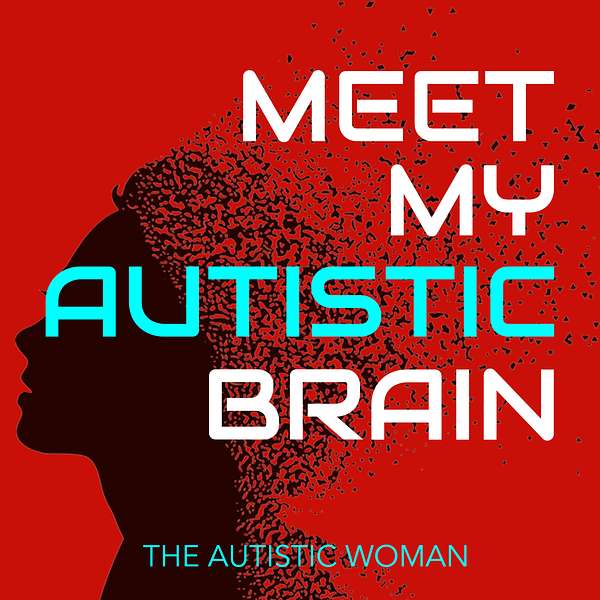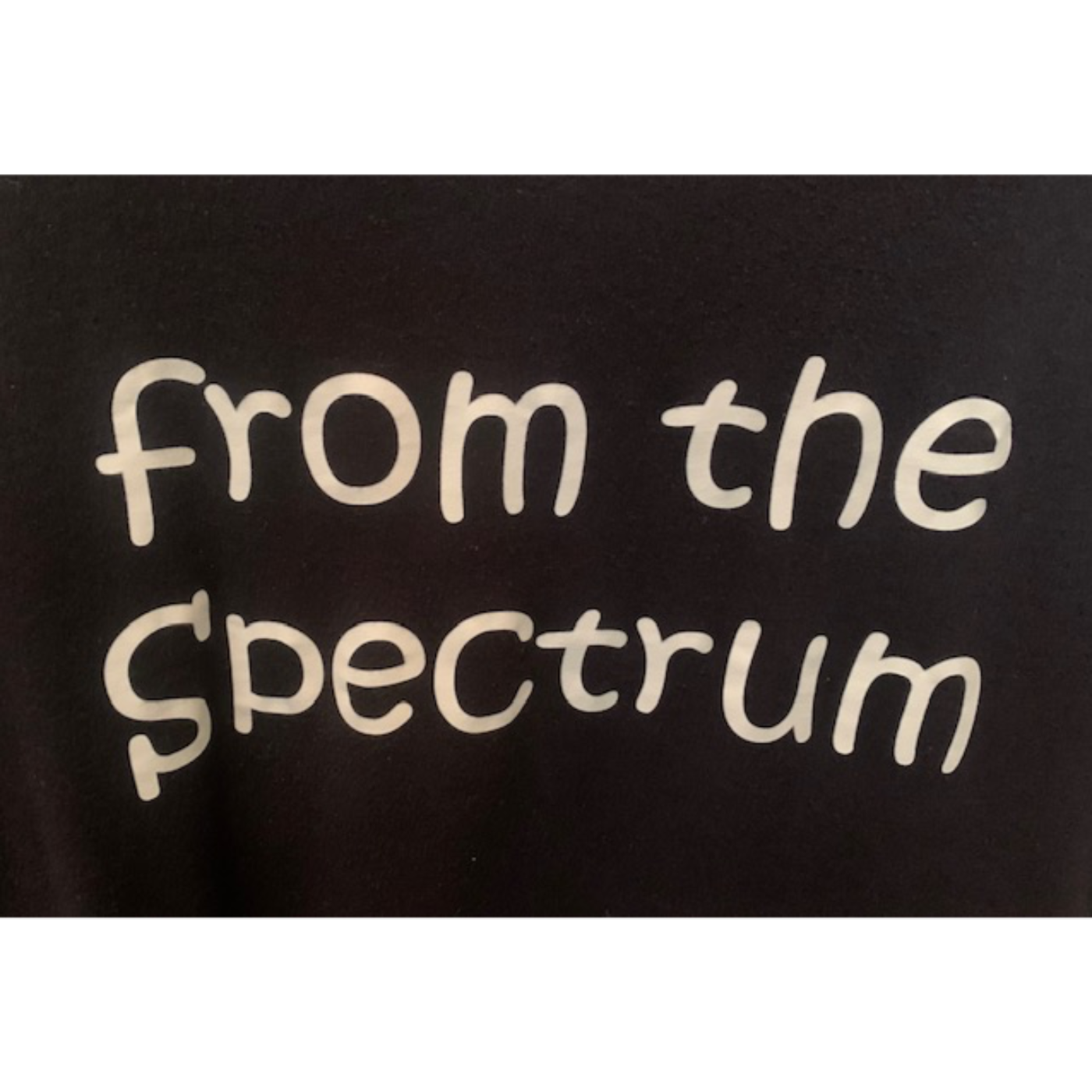
Meet My Autistic Brain
What is it like to find out late in life that you are autistic? The Autistic Woman talks about life experiences and how autistic traits affect her as an adult. You'll hear personal stories, opinions about research and the importance of autistic voices. Includes some fun stuff too and interviews of autistic guests! This podcast is primarily for adult autistics and their family and friends. It's one of the top 0.5% most popular shows globally as ranked by Listen Score with more than 1,000,000 downloads.
Meet My Autistic Brain
Object Permanence
When you put something away and then forget that you even have that thing, you have an issue with object permanence. It can affect what we believe about other people’s feelings for us. Hear what scientists say about how it relates to autism.
Link to the research in this episode
Sunsama free trial: https://try.sunsama.com/xi4blkokndgk
RATED IN THE TOP 0.5% GLOBALLY with more than 1,000,000 downloads!
If you are an autistic person who has written a book about autism or if you have a guest suggestion email me at info@theautisticwoman.com.
Instagram
Ko-fi, PayPal, Patreon
Linktree
Email: info@theautisticwoman.com
Website
Welcome to MMAB. I’m your host, TAW
I discovered autism late in life and in this podcast I share my experiences and challenges so you can learn what it’s like to be autistic.
I want to thank you for supporting the show. It’s because of you that I can keep the podcast going! Check the links in the show notes today to contribute!
“If I don’t see it, it doesn’t exist,” is a thought I’ve often had and something I’ve heard other autistics say. People with ADHD say it too.
If I have something that doesn’t have a particular place the way silverware does for example, if it’s out of sight it’s as if it hadn’t existed. If I have a pile of papers on my desk and put them away somewhere I will forget:
-that there ever was a pile of papers I put away.
-where the papers are
-that there was something that needed to be done
-what needed to be done
-when it needed to be done
To make it more confounding, if an item has a specific place like a spice in the pantry for example, I can tell you what shelf it’s on and whether it’s on the right or left side behind or in front of something.
This phenomenon is known as object permanence which is understanding that things, people or situations continue to exist even when they are out of sight.
A child learns object permanence as part of the development process. It’s considered to be one of the earliest methods for evaluating working memory. Object permanence involves the frontal lobe and is tied to the development of executive function. Object permanence is studied in young children.
Jean Piaget, a British psychologist, is known for his Theory of Cognitive Development in children. His theory says that object permanence is formed between the ages of 5-8 months. He concluded that it was involved in the development of working memory. For example the baby learns that when its mother leaves, she will return. Not all scientists agree with Piaget’s developmental stage theory.
Not all believe object permanence is affected by ADHD or autism.
Object permanence is considered by some to be a subset of a more general category of permanence.
I remember the first time someone said to me “everything is temporary.” My immediate reaction was that they didn’t know what they were talking about but as I thought about it I realized it could be true! I would prefer to think that I could rely on things I knew and lived to stay the same. How does this relate to object permanence in autism? I couldn’t use logic and there were no rules for what is permanent and what is not. Things in front of me were permanent. Once I could no longer see them, they became irrelevant. They didn’t exist. They don’t affect me.
All of us as humans rely on the idea that things remain the same. The brain defaults to object permanence for our ability to persevere. Without object permanence autistics may develop anxiety about what isn’t seen or what doesn’t exist within their sphere.
Some autistics may deal with an issue of object permanence by developing routines or isolating. It can be a way to establish something that has a relative sense of permanence.
One category of permanence is emotional permanence, the idea that we can trust that an emotion won’t change even when we aren’t focused on it at the time.
If you need frequent reassurance that someone cares about you, if you have unstable emotions or a lot of negative thinking, if someone tells you they care and you feel yourself thinking “oh no you don’t” you may have an issue with emotional permanence.
On the other hand if you understand that people who aren’t there with you still love you, you feel positive about life and you can regulate your emotions you may have emotional permanence.
Emotional permanence gives people security that other people in their life care about them. Difficulty with permanence leads to fear of abandonment and insecurity. It may be why some autistics avoid deep relationships.
Now, I realize issues like these can arise in other situations like depression. Is there any relationship? IDK if depression affects emotional permanence or vice versa or none of the above.
I want to tell you how Sunsama has changed my life. It’s not a cliche. It’s the real thing. In the first two weeks using Sunsama I finished 217 tasks! Hard to believe? I know, right!
With Sunsama I am focused on what I need to do, I’m not using energy to manage lists and I don’t feel the anxiety I felt when I had so many things hanging over my head. Everything is in one place!
I didn’t expect the results I get from Sunsama. I don’t feel overwhelmed and bottom line is that I’m getting a lot done.
I wanted a productivity tool, not a to-do list. I use Sunsama and I’m happy about how much it helps me stay on top of things.
There are too many features to talk about here. You can try Sunsama yourself free for 30 days by using the link in the show notes. No credit card required.
Sunsama is easy to set up and use. Try it and see if it changes your life the way it has mine.
One paper studied the now-defunct test for theory of mind in autistic people to see whether the test ignored the idea of object permanence. I’ll link it in the show notes.
The paper suggests that rather than a poor theory of mind, autistics may have an issue with object permanence. The scientists point to the now-invalidated test that goes something like this: A child and their mother are shown two boxes. The first box has a rock in it but the second one does not. The mother leaves the room and the tester moves the rock from the first box to the second box. Then the tester asks the child where their mother will look for the rock. The “autistic” child will say that the mother will look for the rock in the second box where the rock now is. The now debunked theory said that this meant the child lacked of theory of mind because the child didn’t realize the mother would look in the first box.
When I heard about this test I actually thought it was logical that the rock would be moved and that the mother would look in the second box, in other words, the box where the rock was. Can you think of a logical reason a mother might look in the box where the rock had been moved to?
The researchers in this paper suggest that this test does not prove a lack of theory of mind, rather it is object permanence that causes the autistic child to form the belief that the object will be moved.
One of the silliest examples that supposedly “proves” theory of mind uses similar reasoning as the rock test. The scientist who proposed it suggested that if there are two birds one of which buries an acorn in view of the other, that when the second bird digs up the acorn it’s because he has a theory of mind of the first bird. To me, the second bird found the acorn because he watched the first bird bury it, not because he knew what the other bird was thinking. He may have known the acorn still existed even though he couldn’t see it.
Another point the study raises is that quote “ASD individuals may seem to grasp OP in some cases, but not in others.” What that means is that we may develop an OP script for the silverware drawer but not have an OP script for where the file is.
There are some who think that object permanence isn’t the issue for autistic people and people with ADHD because they know something exists they just forget where it is. It may beg the question of whether we forget because of our issue with object permanence. I didn’t find any research that addresses this.
Instead what I’m finding is that few, if any, autistic traits exist in a vacuum. It seems that one trait or condition can affect many others and I think object permanence may be the same. Which box contains a rock may be influenced by more than one trait. It’s those subtleties that require us to use caution in reaching permanent conclusions.
In what ways does object permanence affect you? Is it an autistic issue, an ADHD trait or something else?
Reach out to me by email at info@theautisticwoman.com or you can contact me on Twitter @anautisticwoman. I love hearing from you.
Tell your family and friends about the podcast so others can learn what it’s like to be autistic.
I’m appreciative of the support you’ve given me on Ko-Fi, PayPal and Patreon. It makes a difference in whether I can continue to provide content for the podcast. And thank you to those of you who signed up for Sunsama using my link!
I hope you enjoyed this episode. Keep coming back.
Podcasts we love
Check out these other fine podcasts recommended by us, not an algorithm.

Atypical: The Podcast
The Atypical Crew

